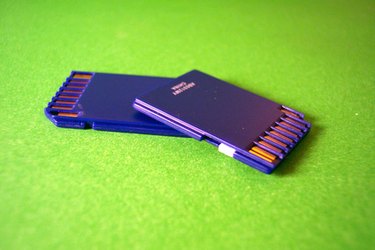
If your SD card has so many files that you are running out of storage space, it's time to remove the files you are no longer using. It's also a good idea to remove damaged or corrupt files that cause SD card issues such as freezing. Because SD cards are cross-platform storage devices, you can use them with Windows or Mac OS X systems and delete the files you no longer want.
Step 1
Insert your SD card into the card slot on your computer if it has one. You should see a card slot on the front or side of your computer. If your computer does not have a built-in card reader, purchase a multi-card reader from an electronics, retail or online store. As of 2010, card readers are priced anywhere from $5 to over $30 depending on the type. Once you purchase a multi-card reader, connect it to your computer using the USB cable that came with it, and then insert your SD card into the SD card slot on the reader.
Video of the Day
Step 2
Double-click "My Computer" or "Computer" on the desktop if you are using a Windows computer and locate your SD card's icon in the "Drives" section of Windows Explorer. If you are using a Mac, you should see your SD card's icon on the desktop.
Step 3
Double-click your SD card's icon to launch its hard disk window. You should see all the files and folders stored on your SD card.
Step 4
Right-click the files you want to delete and click "Delete." Alternatively, you can drag them from the hard disk window to the Recycle Bin (Windows) or Trash bin (Mac OS X). Close your SD card's hard disk window when you finish.
Step 5
Click the "Safely remove hardware" icon on the system tray next to the clock if you are using Windows, and then click your SD card's icon in the hardware window that launches. Click "Stop." When prompted, remove your SD card from your computer. If you are using a Mac, drag your SD card's icon from the desktop to the Trash bin. Remove your SD card from your computer.
Video of the Day